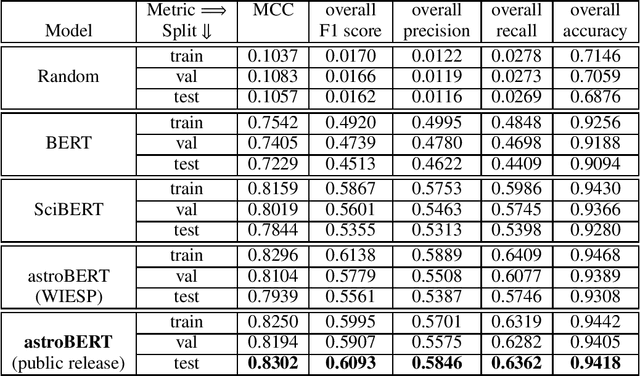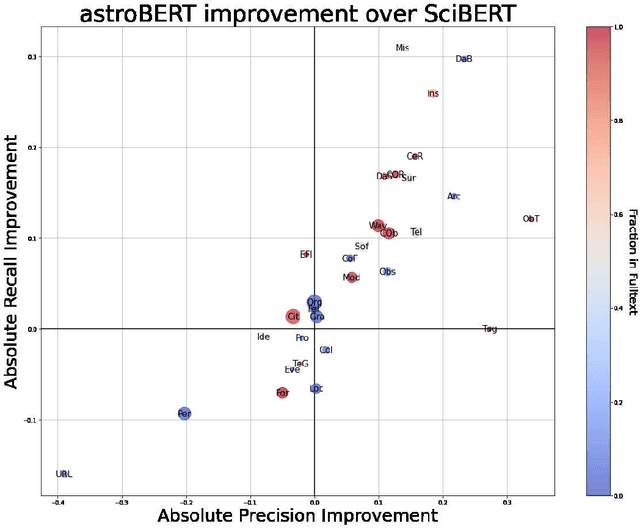Edwin Henneken
Improving astroBERT using Semantic Textual Similarity
Nov 29, 2022

Abstract:The NASA Astrophysics Data System (ADS) is an essential tool for researchers that allows them to explore the astronomy and astrophysics scientific literature, but it has yet to exploit recent advances in natural language processing. At ADASS 2021, we introduced astroBERT, a machine learning language model tailored to the text used in astronomy papers in ADS. In this work we: - announce the first public release of the astroBERT language model; - show how astroBERT improves over existing public language models on astrophysics specific tasks; - and detail how ADS plans to harness the unique structure of scientific papers, the citation graph and citation context, to further improve astroBERT.
Building astroBERT, a language model for Astronomy & Astrophysics
Dec 01, 2021

Abstract:The existing search tools for exploring the NASA Astrophysics Data System (ADS) can be quite rich and empowering (e.g., similar and trending operators), but researchers are not yet allowed to fully leverage semantic search. For example, a query for "results from the Planck mission" should be able to distinguish between all the various meanings of Planck (person, mission, constant, institutions and more) without further clarification from the user. At ADS, we are applying modern machine learning and natural language processing techniques to our dataset of recent astronomy publications to train astroBERT, a deeply contextual language model based on research at Google. Using astroBERT, we aim to enrich the ADS dataset and improve its discoverability, and in particular we are developing our own named entity recognition tool. We present here our preliminary results and lessons learned.
 Add to Chrome
Add to Chrome Add to Firefox
Add to Firefox Add to Edge
Add to Edge